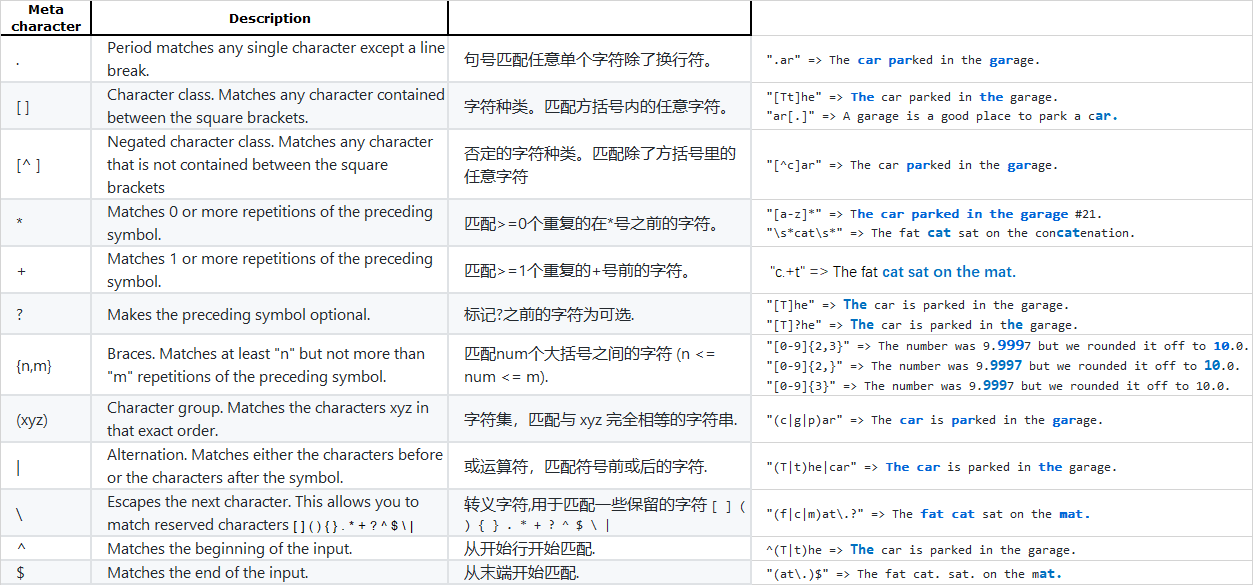1.元字符

2. 简写

3.回溯引用
引用前一个表达式,当前一个表达式满足时
eg :匹配所有<h*></h*>的内容
文本:
<h1>正则表达式</h1> Content is divided into two sections; <h2>subTitle</h2> another line正则:<(h[1-6])>.*?<\/(\1)> 用"()" 标记要引用的正则块 即(h[1-6]) 后边用(\1) 来引用第一个子表达式
<h1>正则表达式</h1>
Content is divided into two sections;
<h2>subTitle</h2>
another line
4.前后查找(前后限定)
| Symbol | Description | 描述 |
|---|---|---|
| ?= | Positive Lookahead | 正向前查找true |
| ?! | Negative Lookahead | 正向前查找false |
| ?<= | Positive Lookbehind | 反向查找true |
| ?<! | Negative Lookbehind | 反向查找false |
1. ?=
查询 以" fat"结尾的The 或the ,但是不要fat
"(T|t)he(?=\sfat)" => The fat cat sat on the mat.
2.?!
查询 不是以" fat"结尾的The 或the ,但是不要fat
"(T|t)he(?!\sfat)" => The fat cat sat on the mat.
3.?!
查询fat 或mat 但是前边必须有 the 或者 The
"(?<=(T|t)he\s)(fat|mat)" => The fat cat sat on the mat.
4.?!
匹配 cat,且其前不跟着 The 或 the。
"(?<!(T|t)he\s)(cat)" => The cat sat on cat.
参考:https://github.com/ziishaned/learn-regex/blob/master/translations/README-cn.md